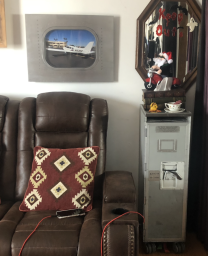
FACULTY LEARNING COMMUNITIES
(by Dr. Battaglia, Sept 2016-May 2017)
- pursue collective, sustained inquiry into specific issues and questions about teaching and learning in higher education
- strive to foster a collegial environment that values pedagogical exploration, experimentation and renewal, and promotes learning together
- represent an excellent opportunity for faculty members to engage in interdisciplinary inquiry and investigation
- provide a forum to engage faculty in the Scholarship of Teaching and Learning (SoTL)
- cross-disciplinary group of faculty and professional staff
- active, collaborative, and year-long program focused on enhancing teaching and learning
- regular meetings, seminars, and/or activities that promote learning, development, SoTL, and community building
- present work at a selected teaching and learning conference
- receive a letter of recognition for your work in the FLC, with a copy sent to your chairperson, dean, and CAO
- successful FLCs balance effective facilitation with effective administration
|
FLC Administrator |
FLC Facilitator |
|
Request ERNIE Team Site or CANVAS course shell for FLC |
Collectively, develop and confirm FLC goals and outcomes |
|
Select and reserve (if required) meeting space (anywhere physically, even Skype, once a month for 90-120 minutes) |
Develop meeting agendas |
|
Develop and maintain budget (submit to Dr. D within 6 weeks) |
Select meeting structure |
|
Manage funds |
Facilitate group formation and processing |
|
Document meeting discussions and post on Team Site/CANVAS |
Consider “value added” for members |
SOME LINKS TO RESOURCES ON ONLINE ACTIVE LEARNING
University of Florida - Center for Instructional Technology and Training
Minnesota State Colleges and Universities
Best Practices in Online Teaching Strategies - Hanover Research Council
Online Learning Insights - Learning Online is not a spectator sport: How to make it active
Active learning in online training: What eLearning Professionals should know
Active learning and creating courses that facilitate active learning in your organization - Litmos
Strategies to incorporate active learning into online teaching - University of South Florida
Interactive Activities in Online and Hybrid Courses
A model for Active Learning in the Online Classroom - University of Wisconsin
Faculty Learning Communities: Ten Necessary Qualities for Building Community
International Society for the Scholarship of Teaching & Learning (ISSOTL)
Adobe Acrobat document [712.0 KB]
Qualities of an FLC:
- Safety and trust – so participants can connect with each other
- Openness – freedom to share thoughts without fear of retribution
- Respect – members need to feel valued and respected
- Responsiveness – respond respectfully, quickly, welcoming concerns and preferences
- Collaboration – consultation and working with and responding to each other
- Relevance – relating subject matter to one’s teaching, courses, scholarship, and life experiences
- Challenge – expectations should be high, engendering progress, scholarship, and accomplishment
- Enjoyment – social opportunities, bonding, invigorating environments
- Esprit de corps – generate pride and loyalty
- Empowerment – participants gain a new view of themselves and a new sense of confidence in their abilities
Facilitator
- Facilis = easy (but it really is NOT)
- Providing leadership without taking reins
- Balance facilitating for the good of the group with one’s own investment in content or decision making (can use co-facilitators to help with this)
- Must find ways to help establish a climate conducive to genuine inquiry, risk-taking, learning, and productivity
- One must note and help adjust the flow of conversation, aid members in negotiating conflict, cultivate members’ sense of ownership of the experiences and the results of their work (and play) together, and encourage increasing member responsibility for the work of leading and even facilitating the group
- Participating in the intellectual life of the group, yet not imposing ideas or misusing power
- Not a group’s expert nor its leader, but rather serves the group and creates the possibility for members to achieve their individual and collaborative goals (flexible and accommodating to needs of group members)
- One focuses more on interpersonal processes as well as approaches to working together than on content; more on others’ contributions than one’s own; more on listening, observing, modeling, and ‘directing traffic’ than on speaking, presenting, or taking the lead
- Attitude first – orientation, and a set core of commitments important to group success – respect and compassion for all group members – positive attitude and outlook – flexibility – non-defensive posture – neutrality and non-judgmental approach – willingness to operate as servant leader – steadiness – firmness – calmness – centeredness – confidence – adaptiveness – proactivity – responsiveness – resilience – assertiveness – openness – authenticity – humility – optimism – alertness – results-oriented disposition
FLCs:
- Collective decision-making
- Personal meaning
- Genuine inquiry
- Enjoyment
- Engaging atmosphere
- Shared responsibility
- Shared goal
- Self-selecting
- Voluntary
- Non-threatening
- Social
- Intellectually stimulating
- Creativity
- Chance to grow and learn
- Cross-disciplinary
- Good record keeping – (agenda, notes, minutes, etc.)
- Chance to explore
- Meet regularly
- Meet outside work
FLC Facilitation involves two separate but interrelated responsibilities:
- TASK: help group members do intellectual work + manage organizational and logistical details
- PROCESS: help group draw on individual member strengths + see that individual needs get voiced and addressed + help mediate challenging personal interactions
Convener: some FLCs designate this person to oversee the work of the FLC – to manage logistics – then all members share the work – this model has no one person in charge on shepherding the task and process
Facilitation during Meetings: 6 tensions that lie across a continuum
- from tight to loose structure
- from fast to slow pace
- from cooperative to competitive interaction
- from focus on process to focus on results
- from concern with individual needs to concern with group needs
- the type of control exerted by the facilitator, from obtrusive to unobtrusive
Facilitating dialogue
- check your assumptions: “I’m getting the feeling…..”, “It sounds to me as if…..”
- use specific examples, and agree on what important words mean
- explain your reasoning or intent
- ask what others think to make certain you understand
- focus on needs, not solutions
- rather than only advocate or push an agenda, invite questions about your point of view
- discuss undiscussable issues
- point out common positions or threads in discussion that are going unrecognized
- also point out patterns that disrupt conversation or inhibit balanced interactions
- help participants recognize the territory already covered
- remind participants of program and group goals, especially at key intervals if the group seems to be stalling or hitting a low point
Tensions and paradoxes are the essence of life – they spark the keenest learning and best use of diversely varying personalities
Constructive controversy is good – discussion – agreement – novel solutions
Destructive controversy is NOT good – manage conflict
Conflict management – 4 memorable steps:
- separate the people from the problem (be hard on problem, soft on people, acknowledge emotions as legitimate, build relationships before you need them)
- focus on interests, not positions (probe for deeper understanding, modulate tone to emphasize curiosity)
- invent options for mutual gain (find win/win, brainstorm strategies, use differences to advantage of differing parties)
- find objective criteria (reframe problems, appeal to fair standards and procedures)
Facilitation over the course of the year:
- Breaking the ice
- Decision making procedures
- Group norms
- Goals (SMART)
- Assessment and taking stock
SMART goals:
Specific enough to be memorable
Measurable (qualitatively or quantitatively)
Accountable to named volunteers
Realistic enough to get done
Time delimited as to when exactly measures will be taken
FLC Guidelines and Ground rules:
- Listen and seek to understand before speaking
- Ask clarifying and probing questions
- Assume that others speak from a place of good intentions
- Be willing to challenge one another’s thinking and ideas
- Separate the impact a comment has upon you from the intent of the speaker
- Be discreet about any sensitive information other participants may share
- Provide a level of encouragement and support for one another
- Assume that everyone is here in good faith and has the interests of the institution at heart
- Be sensitive about time
- Do the work and take it seriously
- Keep focused on the goals and stay on task
Tuckman’s Stages Theory of Group Development:
- Forming (hope, optimism, excitement, nervousness, concern)
- Storming (low energy, going in circles, waning interest, overt conflicts)
- Norming (assess nature of conflict, listen well, depersonalize challenges, enforce group norms)
- Performing (see immediate relevance of what you are learning)
- Adjourning (meaningful closure, major event, lunch, awards)
Johnson and Johnson’s sequence of 7 development steps:
- Defining and structuring procedures
- Conforming to procedures and getting acquainted
- Recognizing mutuality and building trust
- Rebelling and differentiating
- Committing to and taking ownership for the goals, procedures, and other members
- Functioning maturely and productively
- Terminating
Components of high-functioning collaborative groups:
- positive interdependence
- face-to-face promotive interaction
- individual accountability
- interpersonal and small-group skills
- group processing
Contact Me
Sarah Nilsson, J.D., Ph.D., MAS
602 561 8665
You can also fill out my
Get Social with Me
Legal Disclaimer
The information on this website is for EDUCATIONAL purposes only and DOES NOT constitute legal advice.
While the author of this website is an attorney, she is not YOUR attorney, nor are you her client, until you enter into a written agreement with Nilsson Law, PLLC to provide legal services.
In no event shall Sarah Nilsson be liable for any special, indirect, or consequential damages relating to this material, for any use of this website, or for any other hyperlinked website.
Steward of
I endorse the following products
KENNON (sun shields)








